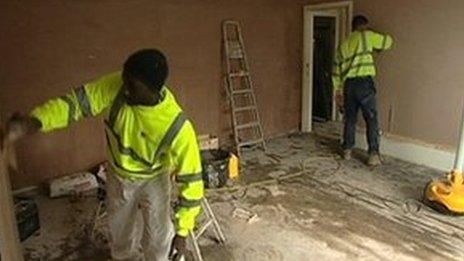London's housing crisis: Five controversial solutions
- Published
- comments
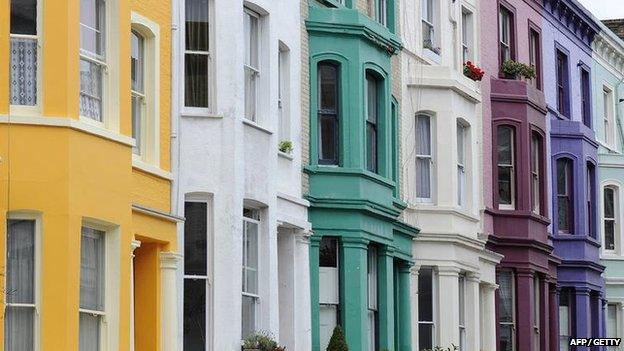
House prices in the capital are rising by more than 20% a year, Office for National Statistics figures show
As pressure to tackle London's housing crisis grows, a number of controversial views are being offered on how the problem should be addressed.
'House prices soar'. 'Fears of a housing bubble'. 'First-time buyers priced-out'. These are familiar headlines to Londoners. Each has appeared in the press in the past month, but similar headlines have become all-too recognisable over the past couple of years.
London's house prices are rising by more than 20% annually, according to latest Office for National Statistics figures.
The city needs 63,000 new homes each year, but only a third of these are being built while a "lost generation is being ruled out of ownership" due to "soaring rents, poor conditions and rising homelessness", it has been claimed.
But what alternative solutions are being put forward to tackle the issue?

Move old people to smaller flats
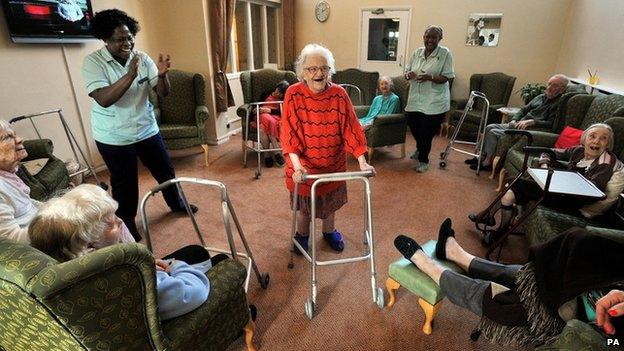
Lord Best says building 100,000 homes for the elderly could free up accommodation for 350,000 people
One in four children in London live in overcrowded homes, according to English Housing Survey figures. At the same time, thousands of single elderly people live alone in multi-bedroomed suburban properties.
In 2012, Local Government Association president Lord Richard Best proposed a radical solution: Building 100,000 homes designed especially for the needs of an ageing population. , external
By downsizing, older people could free up accommodation for families, helping a whole generation of first-time buyers who are priced out of the market.
"We free up lots of family housing, and we look after ourselves when we're older because, sooner or later, those three-bedroom, four-bedroom family houses are going to be too much for us," Lord Best said.
But how easy would it be to convince elderly people to move out of the home they may have lived in for most of their lives?
Peter Girling, chairman of Girlings Retirement Rentals, suggested the government should offer tax breaks to elderly people who give up their property.
"You can't force people to move but you could help them along the way," he said.

Adopt a European attitude
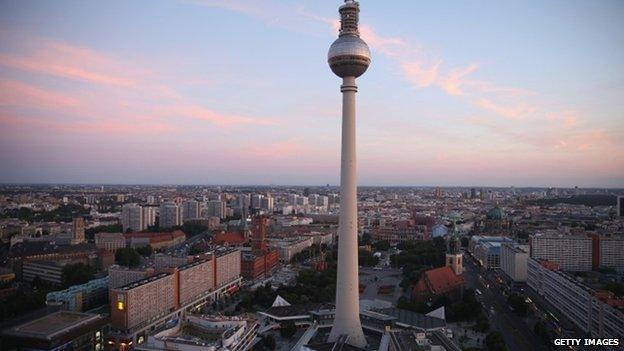
Only 16% of Berliners owned their own place, according to the 2011 census
Perhaps we should just face the fact the golden age of home ownership might be over, and learn to rent like the Germans?
According to the 2011 German census, only 16% of Berliners owned their own place, compared with 50% in London.
"People in Germany or Paris live in rented accommodation for their entire lives and there's no stigma attached," said Patricia Brown, who chairs the London Festival of Architecture.
She said following the example of Germany and enabling people to rent better properties for longer could be a solution. For instance, in Germany tenants can only be evicted with a minimum of three months' notice., external
London's mayor Boris Johnson launched a voluntary accreditation scheme aimed at improving rental standards, external in May.
In order to be approved for the London Rental Standard, landlords are required to meet a set of commitments including "transparent fees" and "improved response times for repairs".
But Labour's London Assembly housing spokesman Tom Copley thinks the scheme does not go far enough.
He suggested three-year tenancies "as standard with caps on annual rent increases" would make "renting in London more stable".

Build all over the green belt
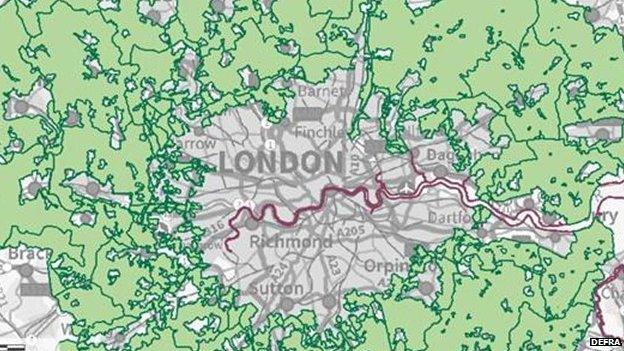
Sam Bowman from the pro free market Adam Smith Institute think-tank says the greenbelt should be built on
There is still plenty of green belt land within the M25 and Sam Bowman, a research director at pro free market think-tank The Adam Smith Institute, thinks maybe the time has come to build on it.
As of 2010, London had 484,173 hectares of green belt - 3.7% of England's total land area, according to the Campaign to Protect Rural England., external
Mr Bowman said this would mean "bigger homes and cheaper homes for everybody in order to give people that space to live".
But Ann Goddard, of Elstree & Borehamwood Greenbelt Society, said: "Green belt is very important. You only have to look at the English countryside. It's so pretty."
Ms Goddard, who lives in the green belt in Hertsmere, Hertfordshire - 12 miles (19km) north-west of central London and within the M25 - added: "We need green spaces for recreation purposes and to make a demarcation between the settlements."
Mr Bowman suggested a compromise could be reached "if we stopped thinking of the greenbelt as one single unit and differentiate between the areas of beauty and the intensive farmland".

Penalise owners of empty properties

There are more than 80,000 empty properties in London
Perhaps there is not a shortage of homes for Londoners after all. More than 80,000 homes in the capital currently stand empty.
Last year, councils were empowered to use the Empty Homes Premium to charge home owners 50% more council tax if they left properties empty for two or more years.
But the results of a Freedom of Information request published by BBC London last week showed that just 4,399 of the 80,489 empty properties in the capital had been subjected to the Empty Homes Premium.
Responding to the revelations, Labour leader Ed Miliband said he was "deeply concerned".
But Daniel Astaire, Westminster Council's Conservative cabinet member for housing, said: "The way to build homes is not to tax existing homes and stop people investing and buying in our city."

Build on brownfield sites

Chancellor George Osborne visited a housing development in Lewisham to launch a government-backed scheme to build on brownfield sites
Building on brownfield sites - land previously used for industrial or commercial purposes - is possibly the least controversial solution on this list.
In June, the Treasury announced 50,000 new London homes would be built on 20 such sites.
But Mr Johnson has said the scheme is a "just a fraction of what needs to be done".
The mayor has said 49,000 homes need to be built in the capital each year, while Labour puts this figure at 63,000.
But developers face problems. Brownfield land is often contaminated and expensive to clean, getting planning permission to build can be a lengthy and costly process and putting in new roads and train links can prove tricky.
But Lib Dem London Assembly member Stephen Knight said what was important was the type of homes that were built.
"We need changes to planning laws, so the government can determine certain plots of land should be used for affordable housing," he suggested.
- Published24 July 2014

- Published23 July 2014
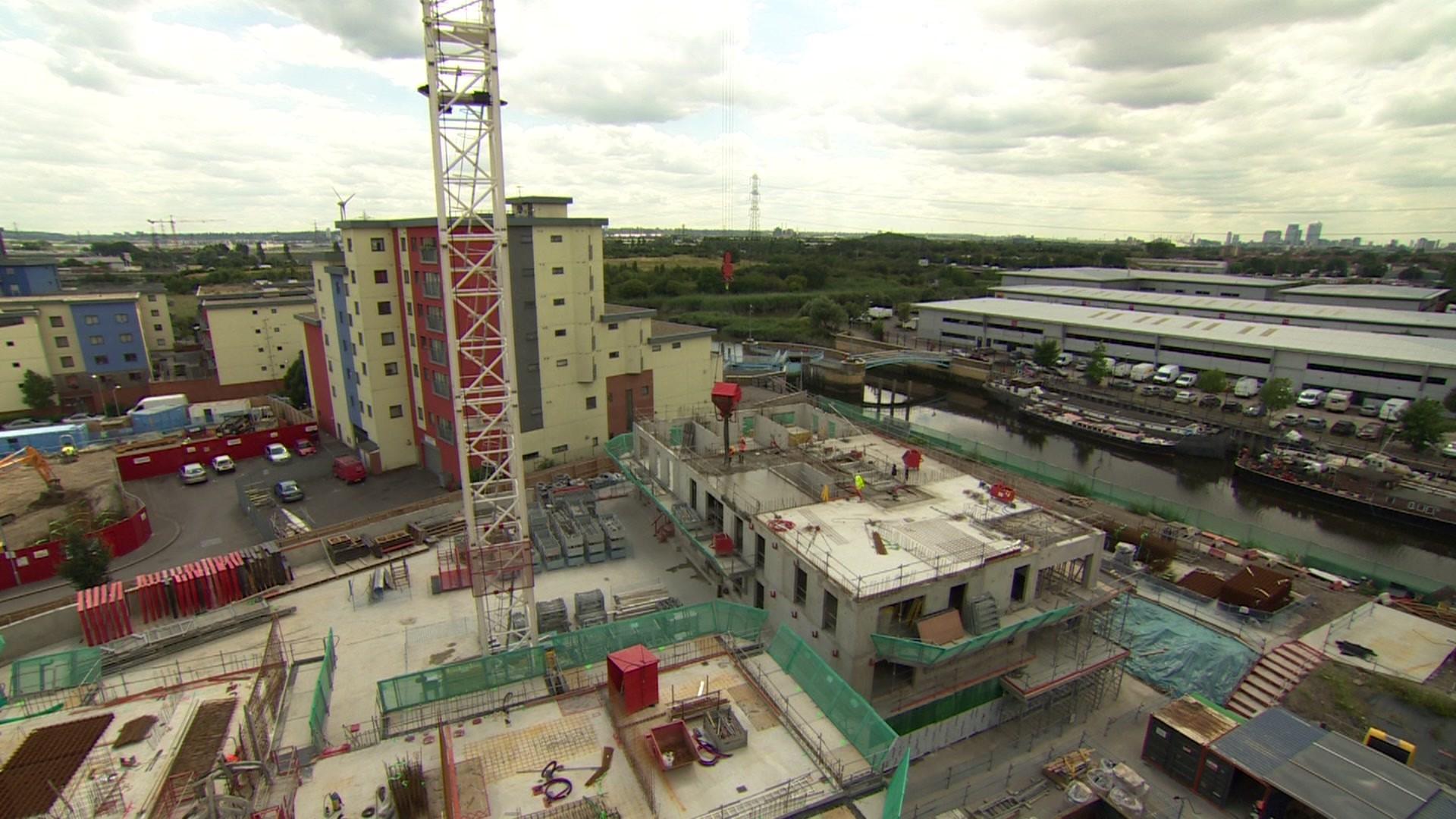
- Published22 July 2014

- Published22 July 2014
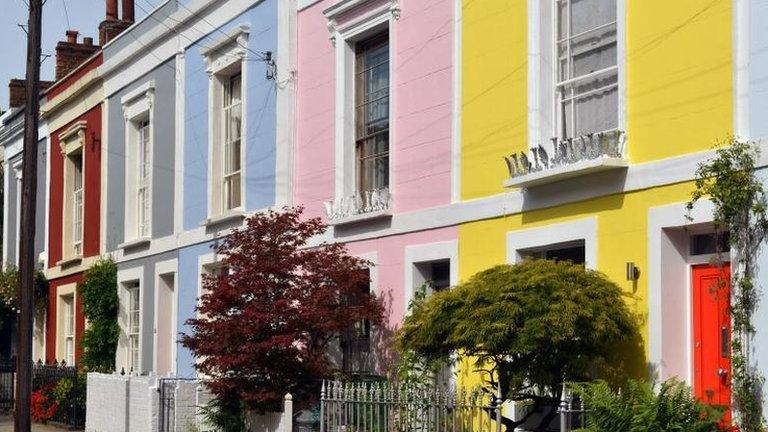
- Published21 July 2014
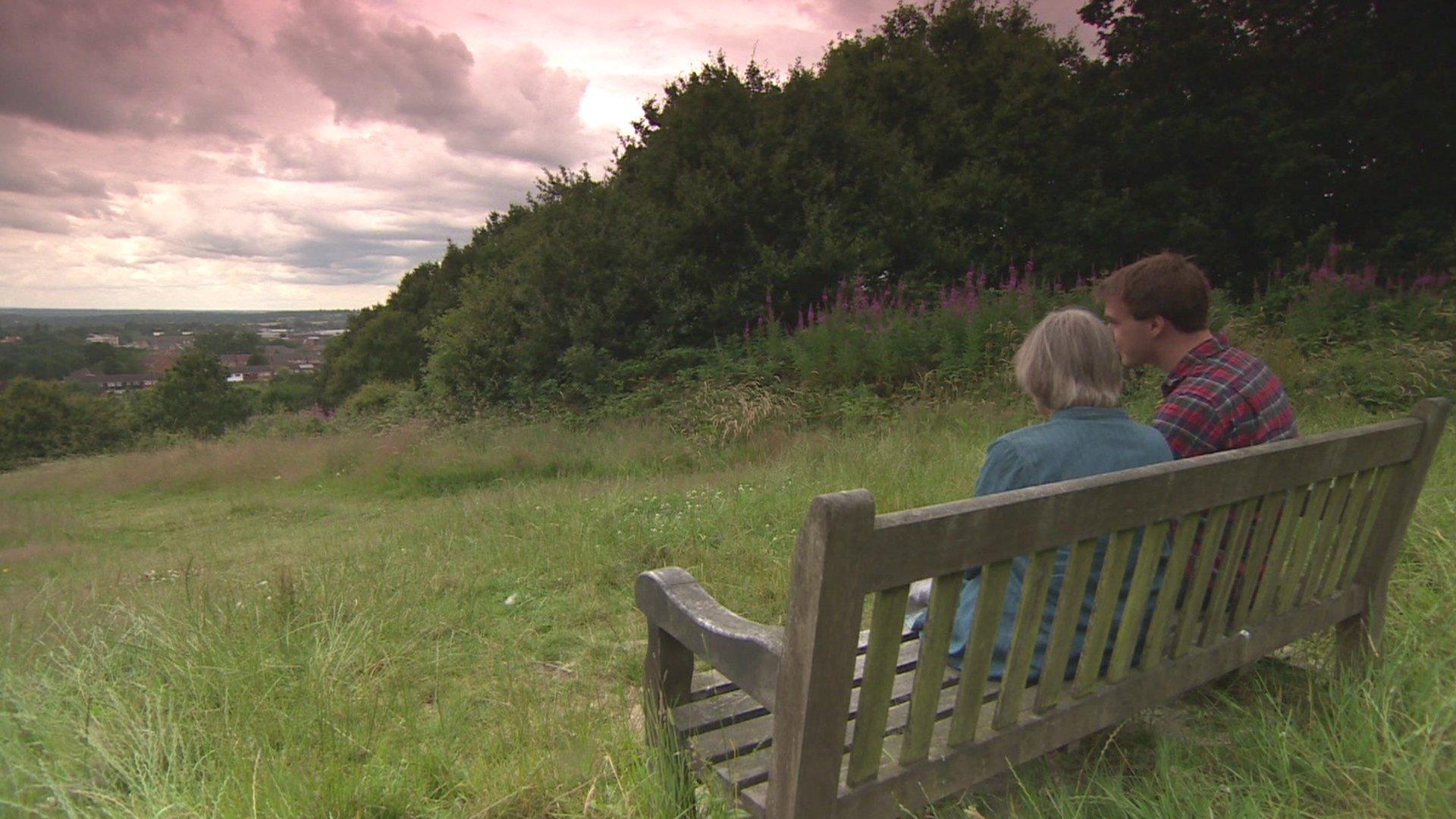
- Published18 July 2014

- Published7 July 2014
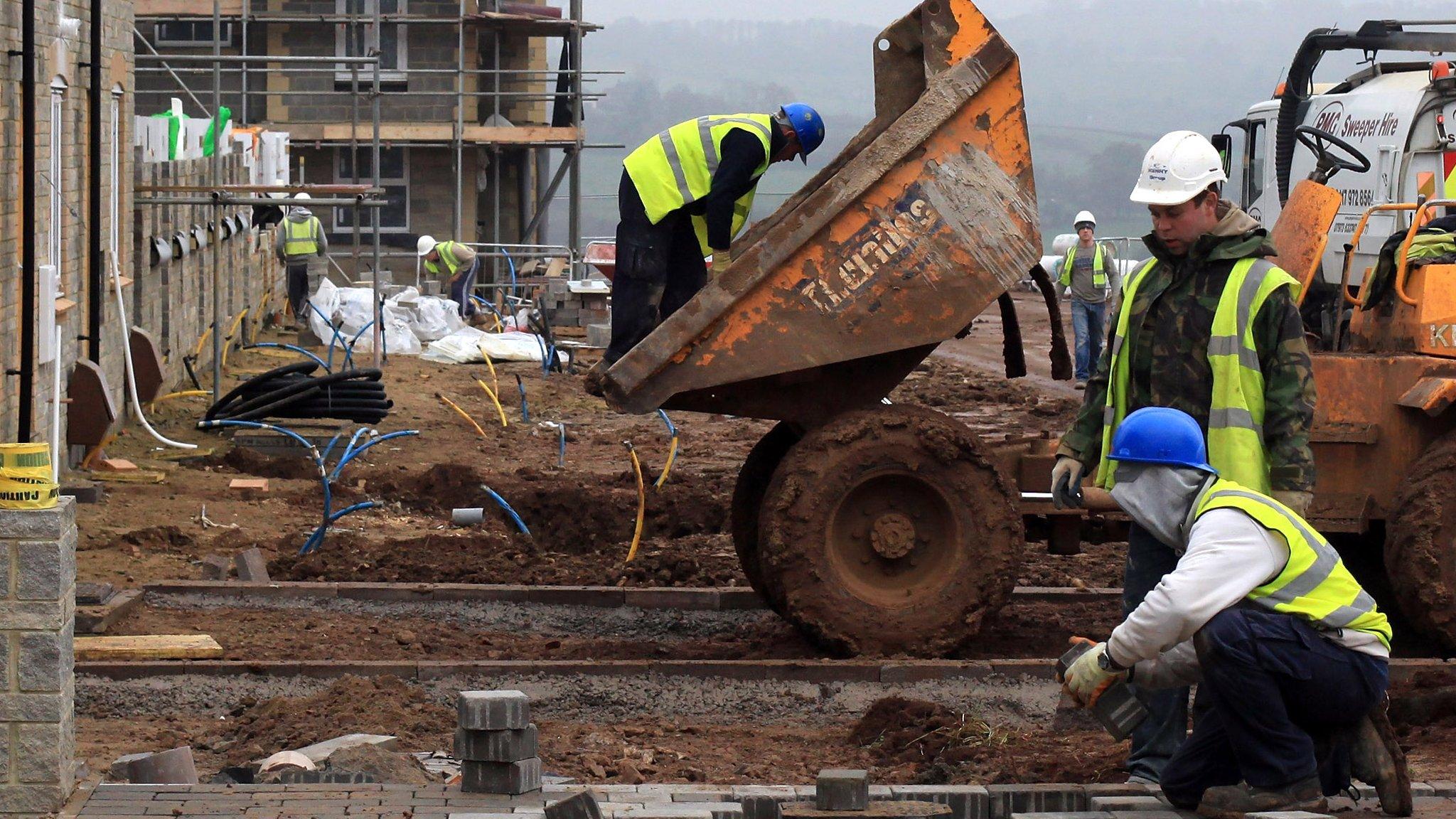
- Published26 June 2014
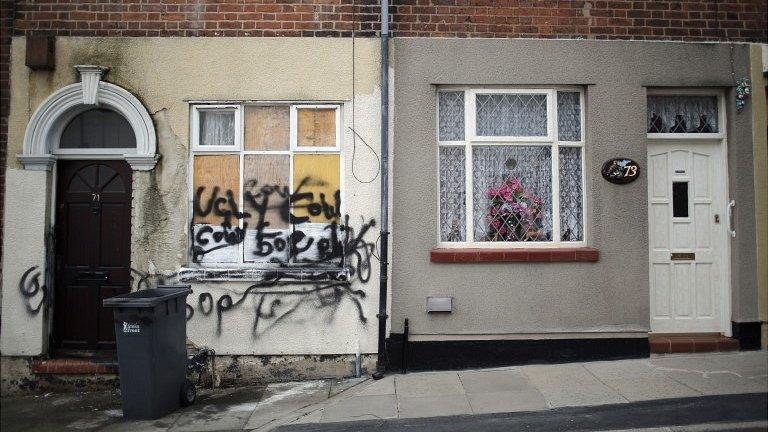
- Published20 May 2014

- Published16 March 2013
